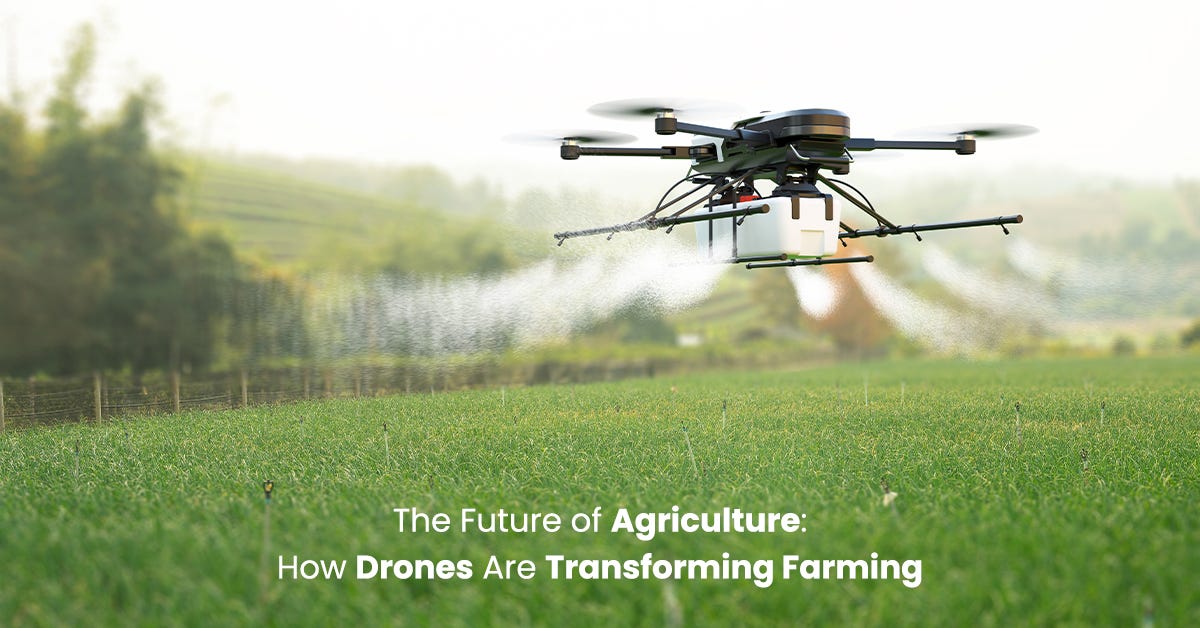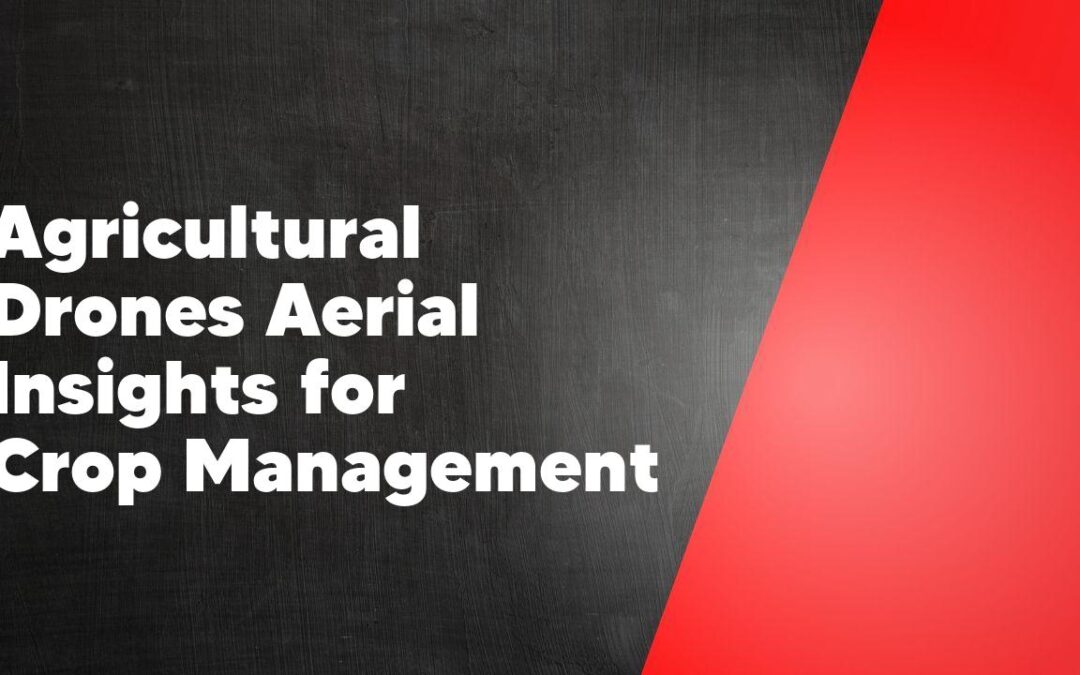Agricultural drones have become a game changer in crop management, providing farmers with aerial insights that were previously unimaginable. These drones, equipped with sophisticated imaging technology, can capture high-resolution images and gather data that can help farmers monitor crop health, detect diseases, and optimize irrigation. With their ability to cover large areas of farmland quickly and efficiently, agricultural drones are revolutionizing the way crops are managed and improving overall yields.
1. How Agricultural Drones are Revolutionizing Crop Management
Agricultural drones have completely transformed the way we manage crops. As a farmer, I can personally attest to the incredible impact that these drones have had on my harvests. With their high-resolution cameras and advanced sensors, these aerial machines provide me with valuable insights into the health and condition of my crops. By identifying areas of pest infestations or nutrient deficiencies early on, I am able to take proactive measures to prevent potential damage. Additionally, drones equipped with pesticide spraying capabilities have significantly reduced the time and effort required for crop protection. Overall, agricultural drones have not only revolutionized crop management but have also increased the efficiency and productivity of farming operations.
2. The Advantages of Using Aerial Insights for Crop Management with Agricultural Drones

Using aerial insights for crop management with agricultural drones has numerous advantages. Firstly, it allows farmers to obtain a comprehensive and real-time view of their crops, which is essential for making informed decisions. By collecting data on plant health, growth patterns, nutrient deficiencies, and pest infestations from above, farmers can quickly identify areas that require attention and take proactive measures to rectify issues before they escalate. Additionally, aerial insights provide a bird’s-eye view of the entire farmland, enabling farmers to optimize irrigation, fertilization, and pesticide application. This not only maximizes crop yield but also minimizes resource wastage, reducing costs and environmental impact. Furthermore, using agricultural drones for crop management enhances the safety of farm workers, as it eliminates the need for manual scouting and exposure to potentially hazardous conditions. In summary, the advantages of utilizing aerial insights through agricultural drones are undeniable, offering improved decision-making capabilities, enhanced efficiency, and increased safety in crop management.
3. A Closer Look at the Technology Behind Agricultural Drones for Crop Management
In this article, I will be diving deeper into the fascinating technology that powers agricultural drones for crop management. These drones are revolutionizing the way farmers monitor and maintain their crops, offering unparalleled precision and efficiency. The technology behind these drones is highly advanced, consisting of various components that work together seamlessly. One crucial aspect is the drone’s sensing and imaging system, which is equipped with sophisticated cameras and sensors capable of capturing detailed imagery and data about the crops. This allows farmers to identify potential issues such as pest infestations or nutrient deficiencies early on, enabling targeted interventions and maximizing crop yield. Additionally, the drones are equipped with GPS and mapping technology, allowing for precise navigation and the creation of accurate crop maps. With their ability to cover large areas quickly and efficiently, agricultural drones are proving to be a game-changer in modern farming practices.
4. Maximizing Crop Yield and Efficiency with Agricultural Drones’ Aerial Insights
One of the most exciting developments in modern agriculture is the use of agricultural drones to maximize crop yield and efficiency. As a farmer, I have always strived to find innovative ways to improve my farming practices and increase productivity. With the help of aerial insights provided by drones, I am able to monitor my crops more efficiently and make informed decisions about irrigation, fertilization, and pest control. These drones are equipped with advanced sensors and imaging technology that can detect crop health, identify areas of concern, and even predict crop yields. This allows me to take proactive measures to address any issues and ensure optimal growth conditions for my crops. The use of agricultural drones has truly revolutionized the way I farm and has significantly increased my yield and overall profitability.
5. Overcoming Challenges and Implementing Agricultural Drones for Effective Crop Management
As a farmer, I understand the challenges that come with managing crops effectively. However, with the advancements in technology, specifically the use of agricultural drones, these challenges can be overcome. Agricultural drones offer a range of benefits, including improved crop monitoring, quicker response to pest infestations, and increased efficiency in the application of fertilizers and pesticides. By using drones, farmers can gather valuable information about their crops in real-time, allowing them to make informed decisions and take necessary actions promptly. These drones can also be used to map and analyze the health of the soil, providing farmers with insights on how to improve its quality and maximize crop yields. Overall, implementing agricultural drones in crop management can revolutionize the way farmers operate, leading to increased productivity and sustainability in the agricultural sector.
6. The Future of Crop Management: Harnessing the Power of Agricultural Drones for Aerial Insights
In the future, I envision a world where agricultural drones play a pivotal role in crop management. These unmanned aerial vehicles have the potential to revolutionize the way we monitor and maintain our crops, providing us with valuable aerial insights. With the use of advanced sensors and imaging technology, these drones can quickly assess the health of crops, detect nutrient deficiencies, and identify pests and diseases. This technology will enable farmers to make more informed decisions about irrigation, fertilization, and pest control, ultimately leading to increased yields and reduced waste. Moreover, the efficiency and precision offered by agricultural drones can help reduce the environmental impact of farming practices, making it a sustainable solution for our ever-growing population.
Conclusion
In conclusion, agricultural drones have proven to be a valuable tool in crop management. They offer precise data collection, allowing farmers to make informed decisions and optimize their farming practices. With advancements in technology, the use of drones is expected to increase, revolutionizing the agriculture industry to improve efficiency and productivity.
1. What are agricultural drones?
Agricultural drones are unmanned aerial vehicles (UAVs) that are specifically designed and used for agricultural purposes. They are equipped with various sensors and cameras to collect data and provide aerial insights for crop management.
2. How do agricultural drones help in crop management?
Agricultural drones help in crop management by collecting high-resolution images of farmland, which can then be processed to detect crop health, identify diseases, monitor irrigation needs, and optimize yield. This data-driven approach allows farmers to make informed decisions and take timely action to improve crop productivity.
3. What sensors do agricultural drones typically have?
Agricultural drones typically have sensors such as multispectral cameras, thermal cameras, LiDAR sensors, and NDVI sensors. These sensors capture data related to crop health, temperature distribution, topography, and vegetation indices, which are then analyzed to assess the condition of crops and plan effective management strategies.
4. Are agricultural drones easy to operate?
Yes, modern agricultural drones are designed to be user-friendly and easy to operate. They come with intuitive flight controls and automated systems for takeoff, landing, and navigation. However, it is important for operators to receive proper training and comply with relevant regulations to ensure safe and effective drone operations.
5. What are the benefits of using agricultural drones?
Using agricultural drones offers several benefits, such as increased efficiency in crop monitoring and management, reduced labor and resource costs, improved decision-making based on accurate data, early detection of crop diseases and pests, and precise application of fertilizers and pesticides.
6. Can agricultural drones be used in all types of crops?
Yes, agricultural drones can be used in various types of crops, including but not limited to cereals, fruits, vegetables, and cash crops. The sensors and data processing techniques can be customized and tailored to specific crop types and growth stages, allowing farmers to optimize crop management practices for different agricultural scenarios.
